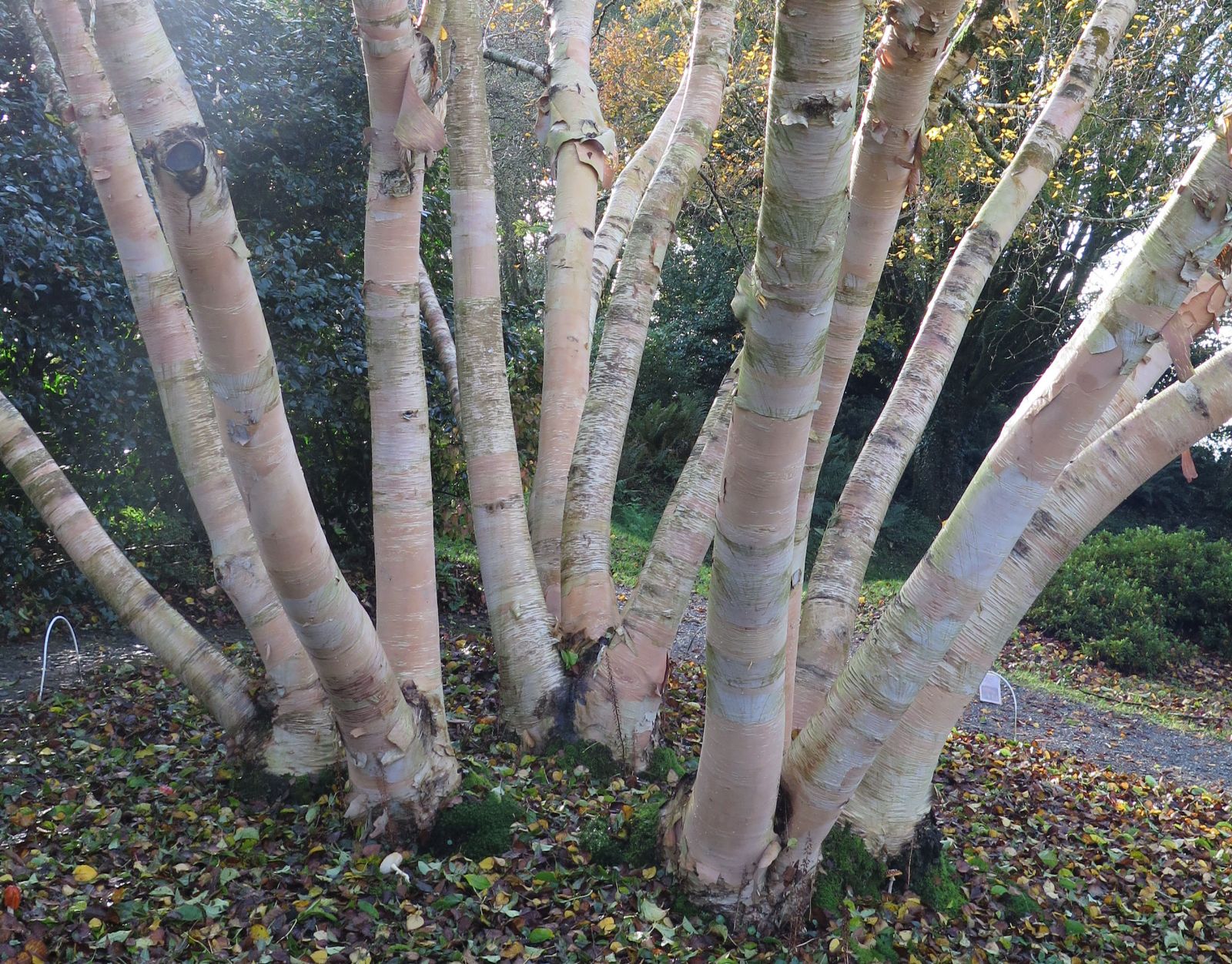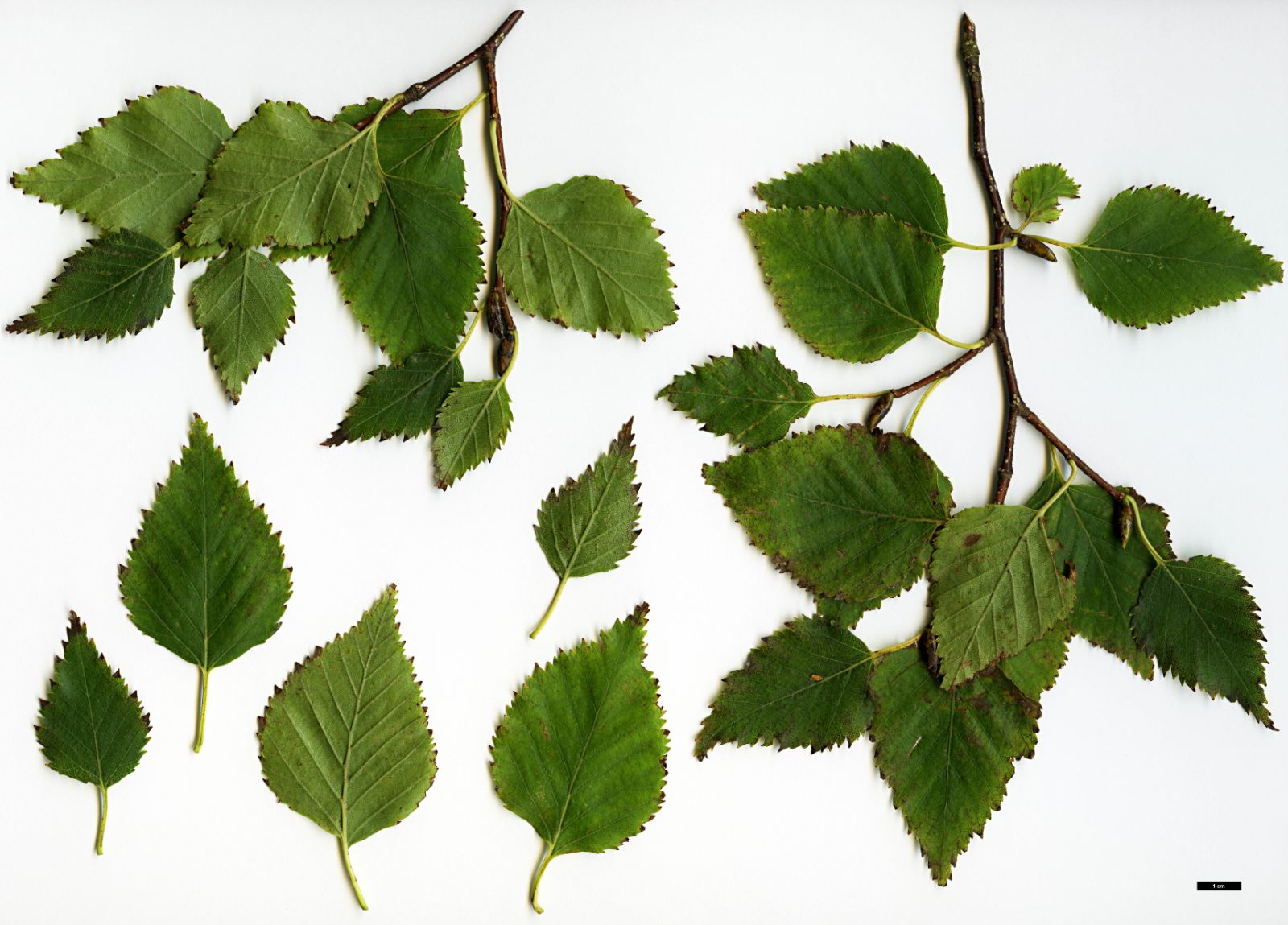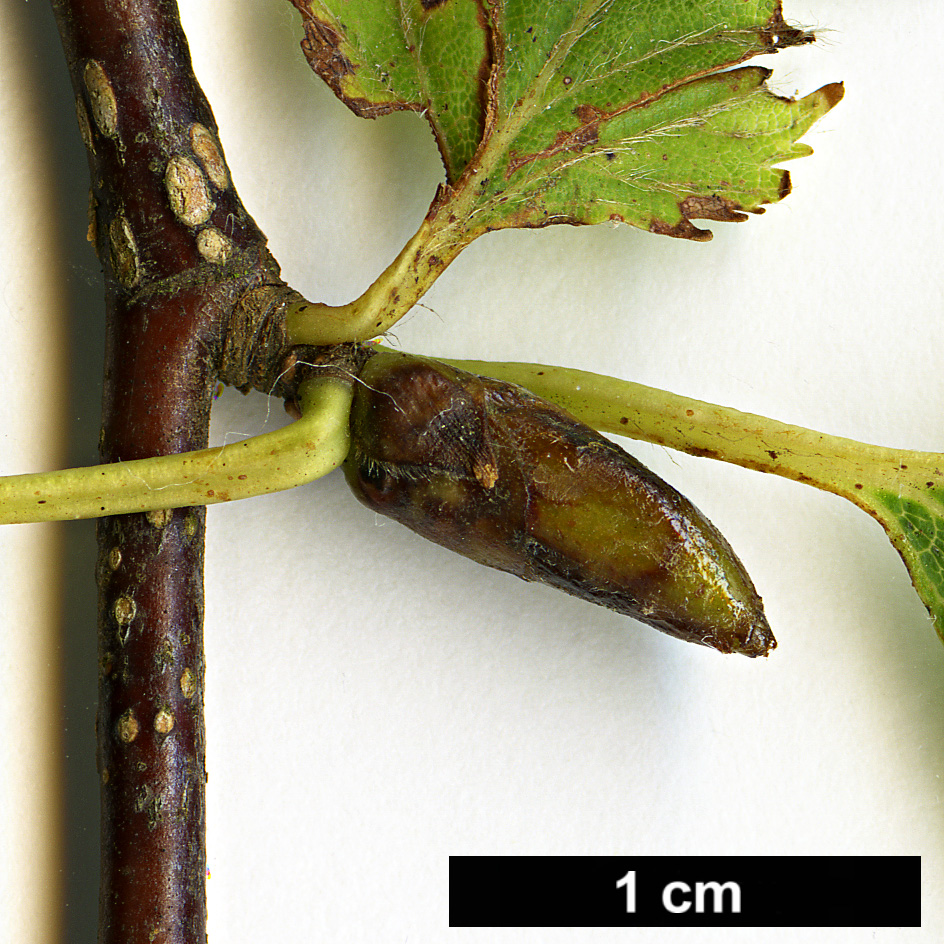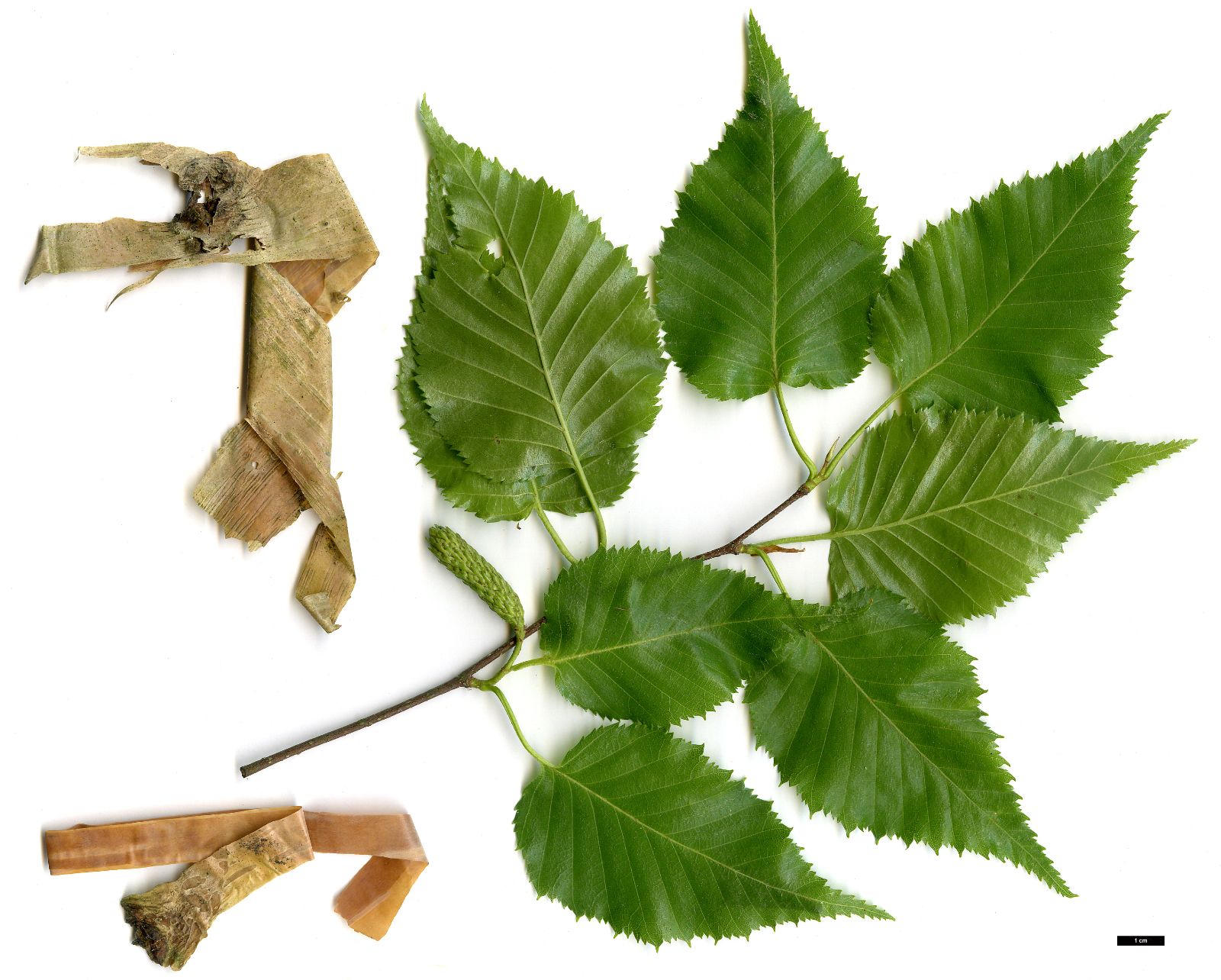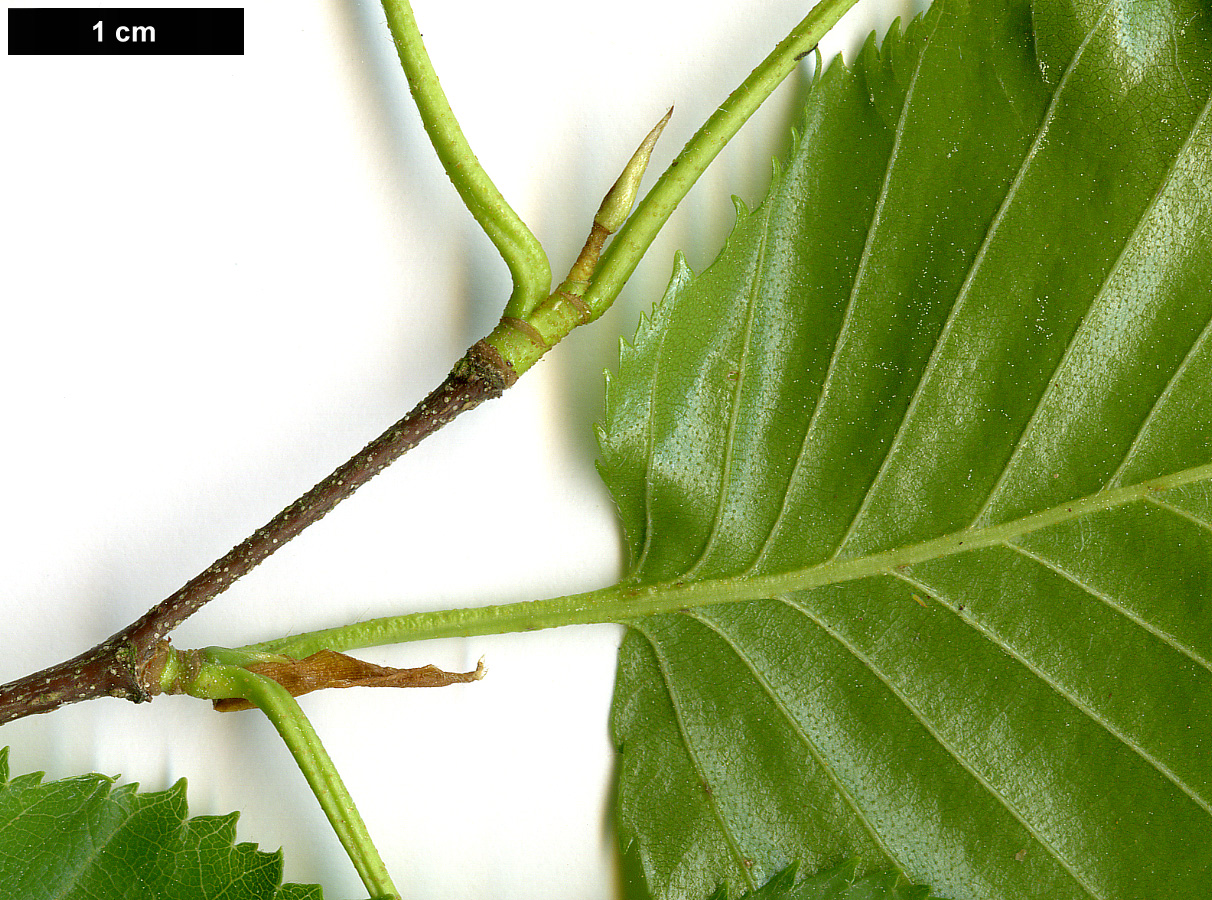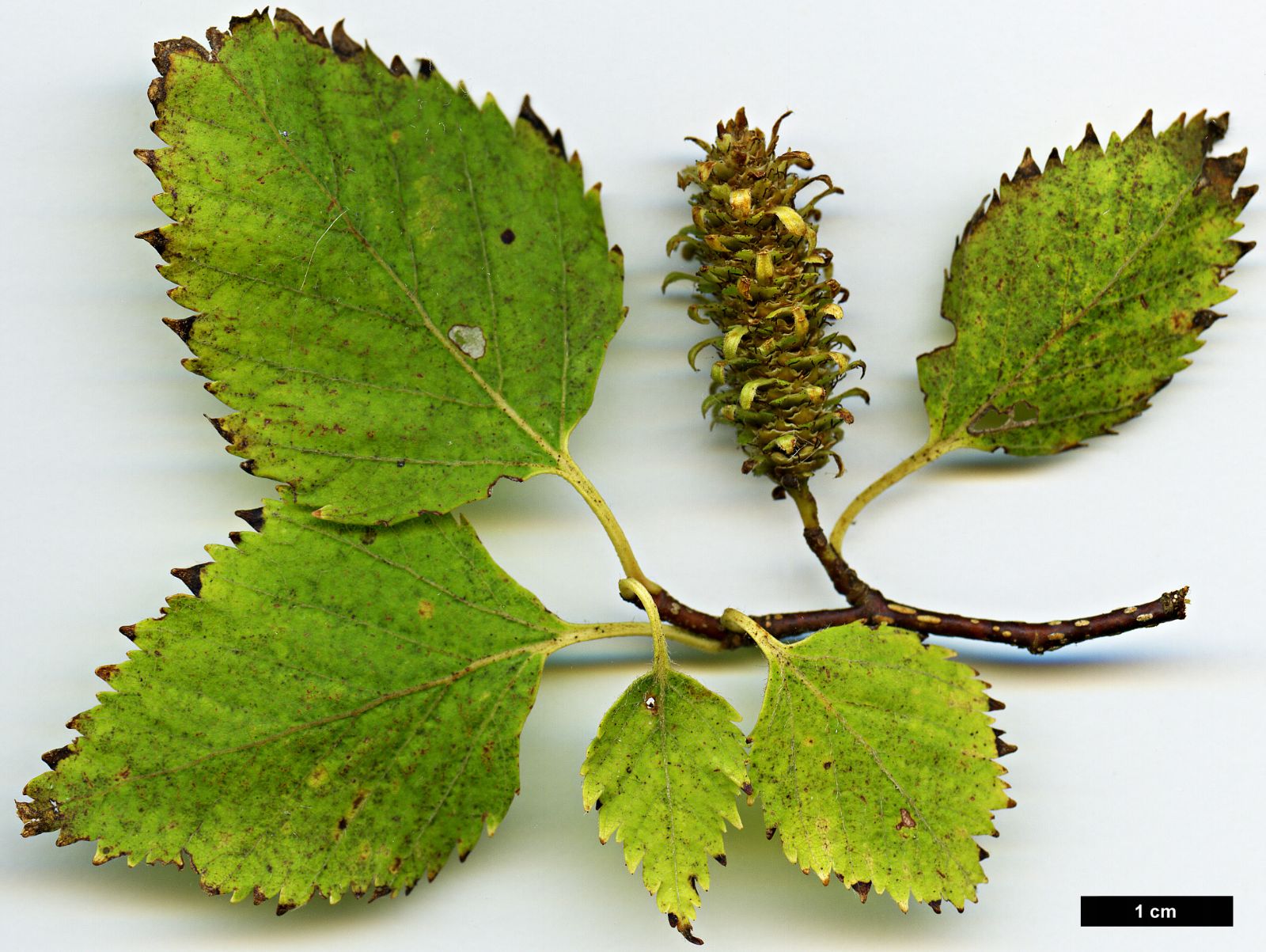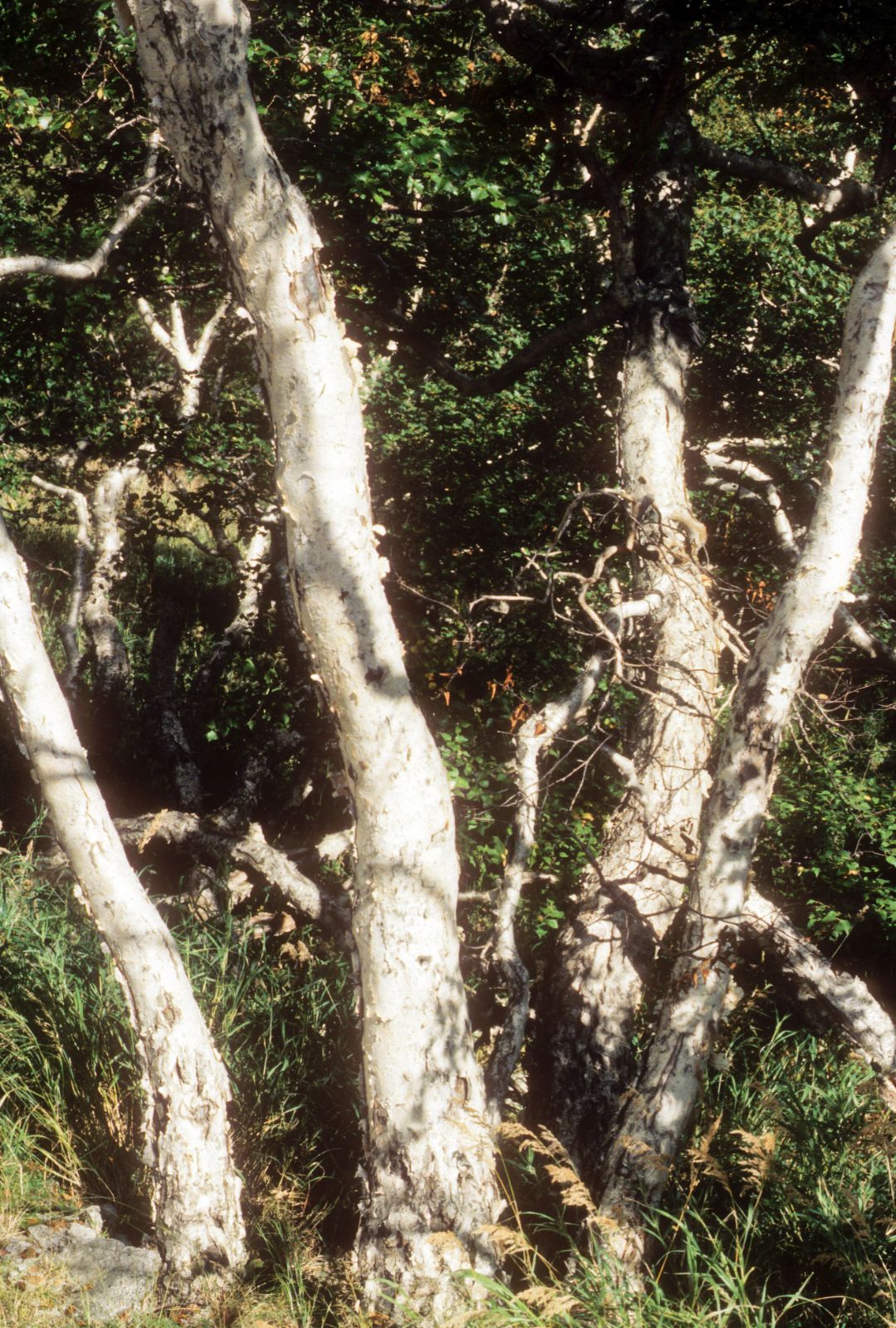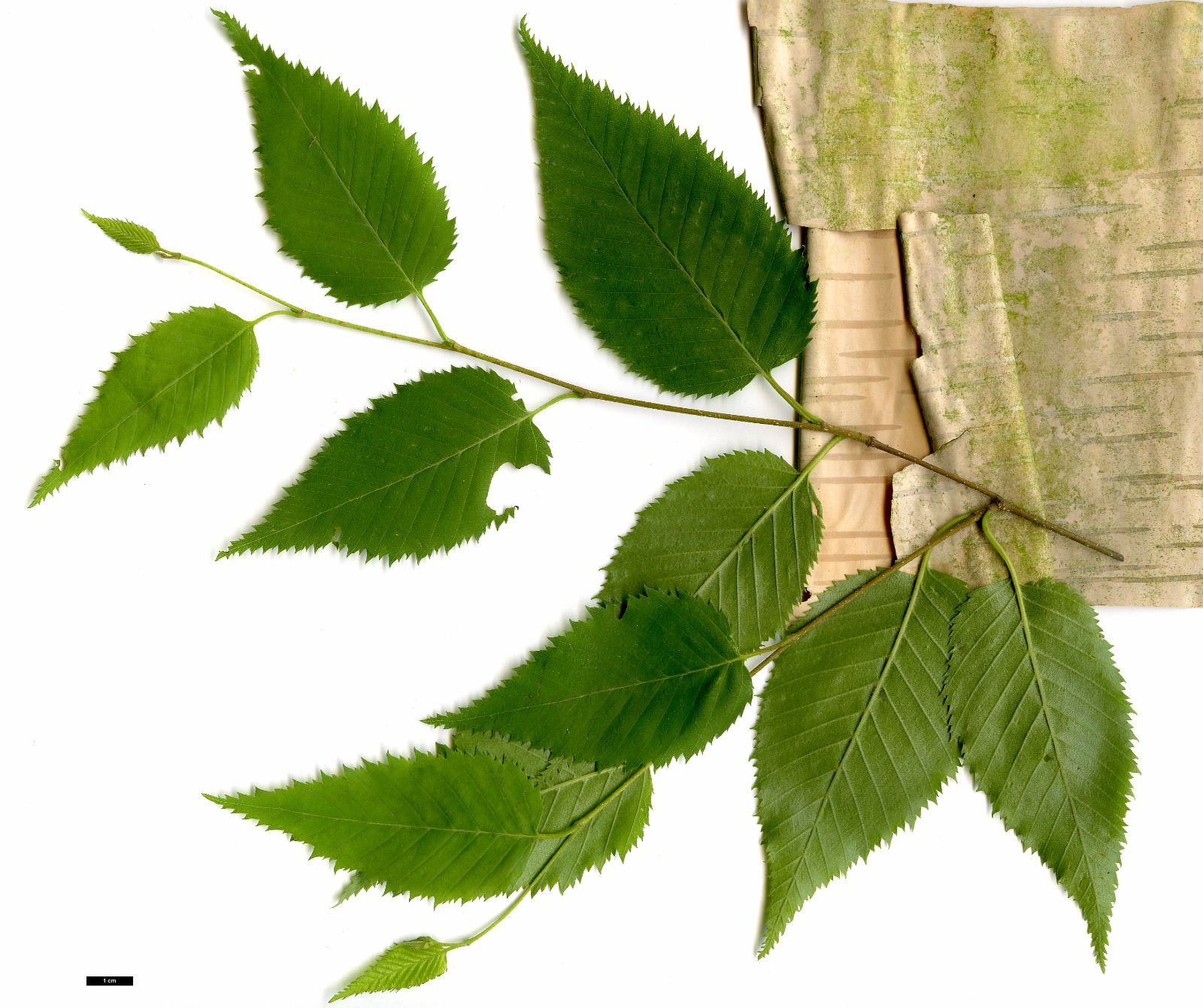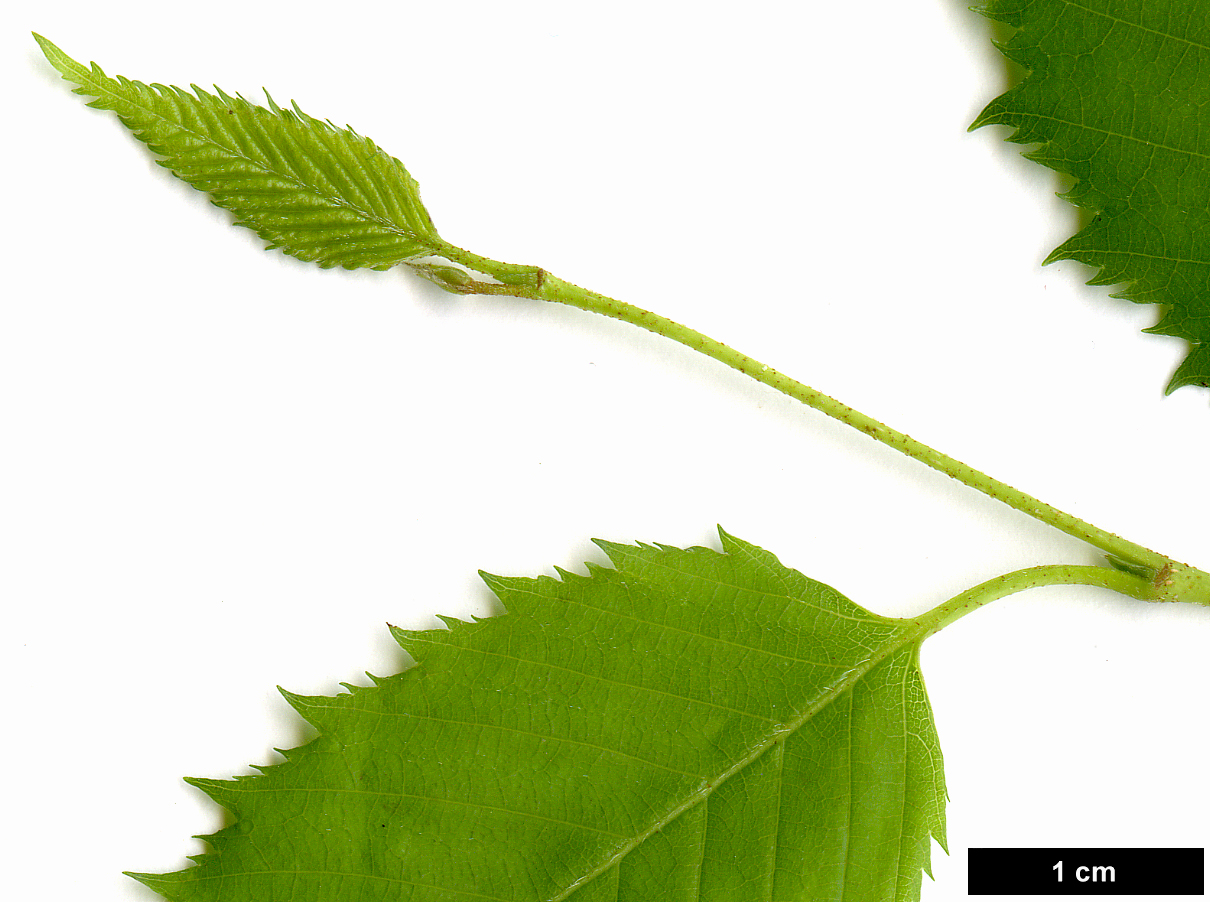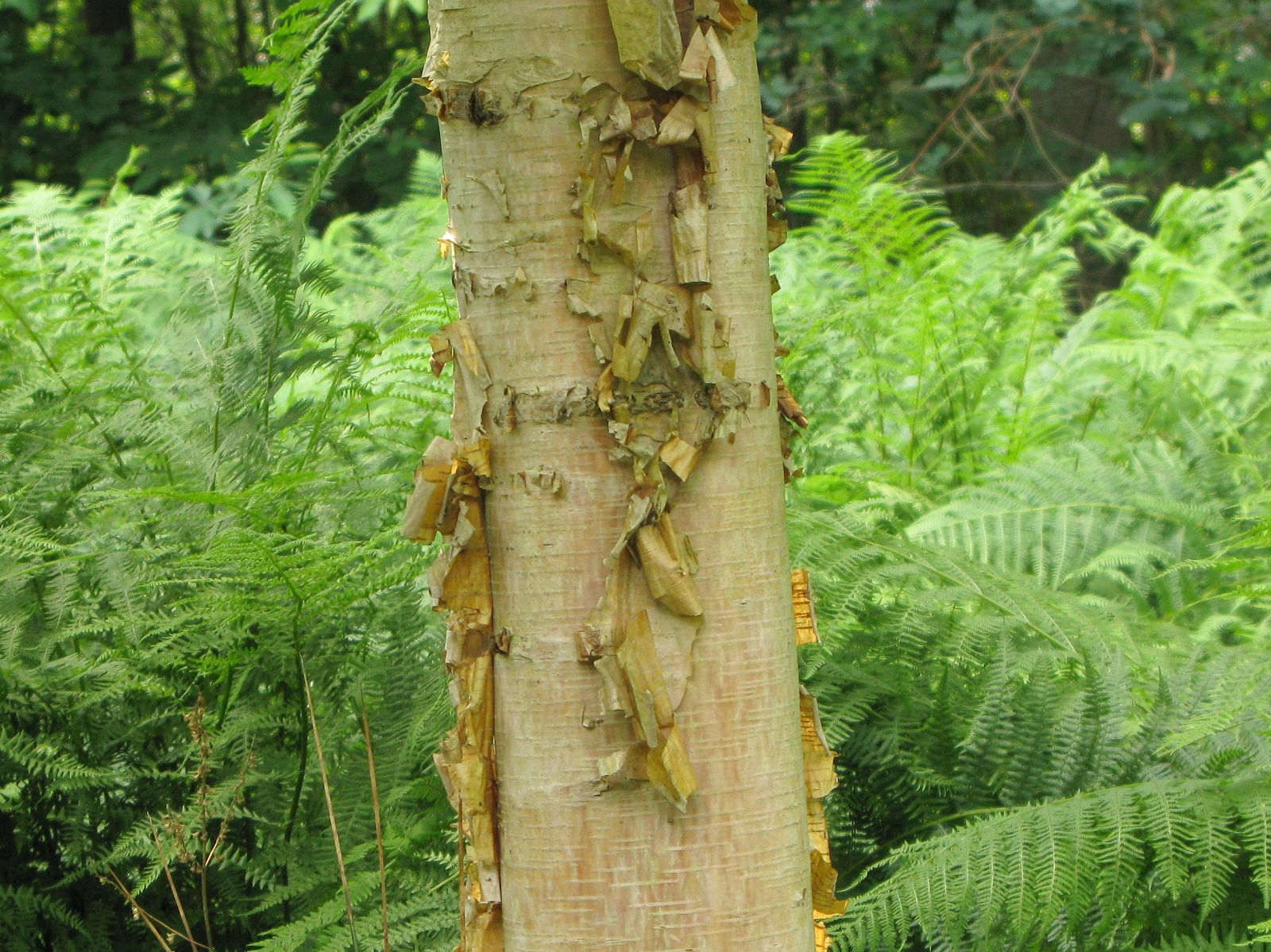Betula ermanii
Credits
Article from Bean's Trees and Shrubs Hardy in the British Isles
Recommended citation
'Betula ermanii' from the website Trees and Shrubs Online (treesandshrubsonline.
Genus
Infraspecifics
Other taxa in genus
- Betula albosinensis
- Betula alleghaniensis
- Betula × aurata
- Betula bomiensis
- Betula × caerulea
- Betula chichibuensis
- Betula chinensis
- Betula coerulea-grandis
- Betula cordifolia
- Betula corylifolia
- Betula cylindrostachya
- Betula davurica
- Betula delavayi
- Betula forrestii
- Betula glandulosa
- Betula globispica
- Betula grossa
- Betula humilis
- Betula insignis
- Betula jacquemontii
- Betula lenta
- Betula luminifera
- Betula lutea
- Betula mandshurica
- Betula maximowicziana
- Betula medwediewii
- Betula nana
- Betula neoalaskana
- Betula nigra
- Betula occidentalis
- Betula papyrifera
- Betula pendula
- Betula platyphylla
- Betula populifolia
- Betula potaninii
- Betula pubescens
- Betula pumila
- Betula raddeana
- Betula schmidtii
- Betula szechuanica
- Betula tianschanica
- Betula × utahensis
- Betula utilis
A tree said to become 100 ft high; bark of the trunk peeling, creamy or pinkish white; that of the branches orange-brown; young shoots not downy, but with numerous glandular warts; buds nearly 1⁄2 in. long, viscid, slender-pointed. Leaves broadly ovate, with a straight or slightly heart-shaped base, taper-pointed, coarsely triangular-toothed; 2 to 3 in. long, 11⁄2 to 21⁄4 in. broad; freely specked with glands on both surfaces, and nearly glabrous except for hairs on the midrib, veins, and vein-axils beneath; veins in seven to eleven pairs; stalk 1⁄2 to 1 in. long, warted. Fruiting catkins barrel-shaped, 1 to 11⁄4 in. long, 1⁄2 to 5⁄8 in. wide, the three lobes of the scales broadest at the rounded ends.
A native of E. Asia from the Kamchatka peninsula through Pacific Russia to Korea, Japan, and Manchuria, and westward in Siberia as far as Lake Baikal. In favourable habitats it grows to 75 ft or more high, but becomes shrubby at high altitudes and near the northern end of its range, and is capable of colonising thin and poor soils – hence the Russian name for it, which means ‘rock birch’. The bark varies in colour from white to grey or pale pinkish brown, and peels in thin sheets. According to Wilson, who studied this birch during his visit to Japan in 1914, it usually divides into several stems near the base, but develops a clean trunk and narrow crown when crowded.
This birch is extremely variable in shape, size, and toothing of leaf. The var. subcordata (Reg.) Koidz., as interpreted by Schneider, is really a miscellany of Japanese and mainland forms which have little in common except that they differ in one respect or another from the type. However, one variety (included by Schneider in var. subcordata) appears to be distinct. This is:
From the Supplement (Vol. V)
specimens: Kew, Pinetum, 56 × 43⁄4 ft (1982); Windsor Great Park, 77 × 41⁄2 ft (1979); Grayswood Hill, Haslemere, Surrey, 63 × 111⁄2 ft at base (1966); Westonbirt, Glos., 70 × 91⁄4 ft (1979); Hergest Croft, Heref., 62 × 31⁄4 ft (1978); Bodnant, Gwyn., 55 × 53⁄4 ft (1981); Brook House, Co. Londonderry, 50 × 51⁄2 ft (1976).
A race of B. ermanii, said to be confined to the Korean island of Cheju Do (Quelpaert), was given specific rank by Nakai as B. saitoana. However, this was reduced by Schneider to the rank of a subvariety of the typical variety of B. ermanii (B. e. var. genuina Reg. subvar. saitoana (Nakai) Schneid.). It differs in its much smaller leaves, up to 2 in. long, with only six to eight pairs of lateral veins.
Another, more distinct, variant of B. ermanii is var. lanata Reg., in which Schneider included B. e. var. tomentosa Reg., described by Regel at the same time. In this the twigs are downy or finely woolly when young; the leaves triangular-ovate, with mostly seven to nine pairs of veins, on downy petioles; the bracts of the fruiting catkins are markedly ciliate, and are downy on the outer side. Native of eastern Siberia and the Russian Far East. It has been given specific rank as B. lanata (Reg.) Vassiliev.
B costata Trautv
A native of N.E. Asia, bearing some resemblance to B. ermanii but differing in the narrower ovate leaves, which are also more markedly wedge-shaped (or rounded) at the base and longer-pointed at the apex; and in the ellipsoid to almost globular fruit-catkins. The leaves have ten to fourteen pairs of lateral veins, a character that further serves to distinguish this species from the continental forms of B. ermanii; Japanese representatives of B. ermanii may have up to fourteen or fifteen vein-pairs but differ from B. costata in the other characters mentioned.
var. japonica (Shirai) Koidz.
Synonyms
B. bhojpattra var. japonica Shirai
B. nikoense Koidz

